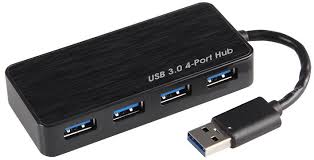Browse the full report at https://www.credenceresearch.com/report/sports-technology-market
Performance Analytics and Wearable Technology
One of the most significant developments in sports technology is the rise of performance analytics. Modern sports teams and athletes leverage data analytics to gain insights into their performance, enabling them to fine-tune their training regimens and strategies. Wearable technology plays a crucial role in this domain. Devices such as GPS trackers, heart rate monitors, and smart clothing collect real-time data on an athlete’s biometrics and movements.
For instance, in professional football, GPS vests track players’ positions, speeds, and distances covered during training and matches. This data helps coaches assess player fitness, prevent injuries, and develop game strategies. Similarly, in basketball, smart shoes equipped with sensors analyze players’ jump heights, footwork, and overall performance, providing valuable feedback for improvement.
Augmented and Virtual Reality
AR and VR technologies have revolutionized the way fans engage with sports. AR enhances live experiences by overlaying digital information onto the real world. For example, during live broadcasts, AR can display real-time statistics, player information, and interactive graphics on the screen, enriching the viewing experience. Fans at stadiums can use AR apps to get detailed information about the players and the game, creating a more immersive experience.
VR, on the other hand, provides an entirely new dimension to sports engagement. VR headsets allow fans to experience games as if they were on the field, offering 360-degree views and interactive experiences. This technology is also used in athlete training, where VR simulations help players practice in a virtual environment that mimics real-game scenarios. For instance, quarterbacks in American football can use VR to practice reading defenses and making split-second decisions without the physical wear and tear of actual practice.
Fan Engagement and Experience
The sports technology market has significantly enhanced fan engagement. Social media platforms, live streaming services, and dedicated sports apps enable fans to stay connected with their favorite teams and athletes around the clock. Innovations like interactive polls, live chats, and exclusive behind-the-scenes content create a sense of community and belonging among fans.
Esports, a burgeoning segment of the sports technology market, has also seen tremendous growth. Competitive gaming has attracted millions of viewers worldwide, with professional esports tournaments offering substantial prize pools and sponsorship deals. The integration of streaming platforms like Twitch and YouTube Gaming has made it easier for fans to watch and interact with their favorite esports players, further blurring the lines between traditional sports and digital entertainment.
Health and Safety
Health and safety are paramount in sports, and technology has played a crucial role in protecting athletes. Concussion detection systems, injury prevention tools, and rehabilitation technologies have become integral components of sports medicine. For example, smart mouthguards equipped with sensors can detect impacts and measure the risk of concussions in contact sports like rugby and hockey. These devices alert medical staff in real-time, ensuring prompt attention to potential injuries.
Rehabilitation technologies, such as robotic exoskeletons and AI-powered physical therapy platforms, aid in the recovery of injured athletes, helping them return to peak performance faster and safer. The use of motion capture technology in rehabilitation exercises allows for precise monitoring of an athlete’s progress and adjustments to their recovery plan as needed.
Future Prospects
The future of the sports technology market looks promising, with continued advancements expected in AI, machine learning, and biometric monitoring. AI-powered analytics will become even more sophisticated, providing deeper insights into player performance and game strategies. The integration of IoT (Internet of Things) devices in sports equipment and facilities will enable seamless data collection and analysis, further enhancing training and fan experiences.
As technology continues to evolve, the sports industry must navigate challenges related to data privacy, ethical considerations, and the digital divide among different regions and sports disciplines. Nevertheless, the potential benefits of sports technology in improving athletic performance, enhancing fan engagement, and ensuring player safety are undeniable, making it an exciting frontier for innovation and growth.
Key Players
- Apple, Inc.
- Catapult Group
- ChyronHego Corp.
- Cisco Systems, Inc.
- HCL Technologies Ltd.
- IBM Corp.
- Infosys Ltd.
- Modern Times Group MTG
- Oracle
- Panasonic Corporation
- SAP SE
- Sony Corporation
- Stats LLC
- Telefonaktiebolaget LM Ericsson
- Amazon Web Services Inc.
- DELTATRE
- Ernst & Young Global Limited
- Genius Sports Group
- Microsoft Corporation
- SAS Institute Inc.
- Sportradar AG
- Synergy Sports
- CBS Sports Digital
- Draft Kings, Inc
- Dream 11 (Sporta Technologies Pvt. Ltd.)
- Dream Sports Group
- FanDuel Group
- Others
Segmentation
- By Wearable Technology
- Smart Wearables
- Smart Clothing
- Smart Glasses
- By Athlete Performance Analysis
- Performance Tracking Systems
- Biomechanics Analysis
- Video Analysis Software
- By Sports Equipment Technology
- Smart Equipment
- Advanced Sports Gear
- By Training and Coaching Tools
- Virtual Reality (VR) and Augmented Reality (AR)
- Training Apps and Platforms
- Performance Analysis Software
- By Fan Engagement and Experience
- Fan Apps
- Augmented Reality (AR) for Fans
- Esports and Gaming
- By Sports Data and Analytics
- Sports Data Platforms
- Sports Analytics Software
- By Digital Broadcasting and Streaming
- OTT (Over-The-Top) Sports Streaming
- Live Commentary and Analysis
- Digital Stadiums and Arenas
- By Sports Medicine and Injury Prevention
- Rehabilitation Technology
- Sports Science and Medicine
- By Sports Management and Administration
- Sports Management Software
- Ticketing and Venue Management
- By Region
- North America
- The U.S.
- Canada
- Mexico
- Europe
- Germany
- France
- The U.K.
- Italy
- Spain
- Rest of Europe
- Asia Pacific
- China
- Japan
- India
- South Korea
- South-east Asia
- Rest of Asia Pacific
- Latin America
- Brazil
- Argentina
- Rest of Latin America
- Middle East & Africa
- GCC Countries
- South Africa
- Rest of the Middle East and Africa
- North America
Browse the full report at https://www.credenceresearch.com/report/sports-technology-market
About Us:
Credence Research is committed to employee well-being and productivity. Following the COVID-19 pandemic, we have implemented a permanent work-from-home policy for all employees.
Contact:
Credence Research
Please contact us at +91 6232 49 3207
Email: sales@credenceresearch.com
Website: www.credenceresearch.com






